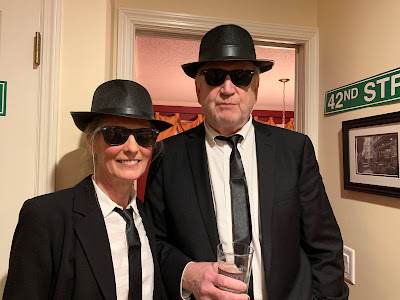We bought a new Olympus E-M5 digital camera, and I've been struggling a bit learning how to use it. There are so many settings and choices to make that I decided to make a checklist for myself to remember to look at some key settings before I shoot. This checklist is tailored to our lenses and the location of settings on our camera.
Camera Checklist
1. PRIORITY MODE
P=
program/point-and-shoot, camera sets aperture and SS based on subject
brightness
Aperture priority-
depth of field
Shutter priority- for
fast action or blurred motion
Scene- lots of
possibilities- portrait, panorama
Art- funky filters to
try, including vintage, soft focus, art bracketing allows to select different
filters
Info button on back of
camera shows/hides info on display
Red button on top of
camera is movie- press to record, press to stop
Hitting the OK button brings
up the super control panel, touch the item to change on the screen and adjust
with front dial
2. LENS:
A short focal-length
lens produces greater depth of field than a longer lens
Short lens is 14-42
mm, F of 3.5-5.6
Longer lens is 40-150
mm, F of 4-5.6
3. SHUTTER SPEED
If you wish to capture
action you will need to use a fast shutter speed or, alternatively, if you wish
to blur motion you will need to use a slow shutter speed.
For sports/wildlife,
think 1/4000 to 1/500
Typical is 1/250 to
1/60
To show motion and in
low light scenes, think 1/30 or longer
4. F-NUMBER
The f-number controls depth of field (DOF).
Small apertures will result in a large DOF, while large apertures (lower
f-number) will result in a shallow DOF (blurrier background)
5. EXPOSURE
COMPENSATION
Make sure that this is
set to zero to begin with.
6. ISO SPEED
Check the ISO setting.
You may have been using a high ISO previously. Set the ISO to ‘auto’ or a low
value (e.g. 200) to begin with.
National Camera
recommends: Outdoors 100-400, indoors with flash 400-800, low light without
flash 800-6400
7. AUTOFOCUS MODE /
AREA
Hit OK to get to super
control panel, can do autofocus with manual adjust
8. HDR-button to top
of camera
Four shots are taken,
each with a different exposure, and the shots are combined into one HDR image
inside the camera. HDR2 provides a more
impressive image than HDR1. ISO sensitivity is fixed to 200. Also, the slowest
available shutter speed is 1 second and the longest available exposure is 4
seconds.
9. WHITE BALANCE
Most of the time when
shooting outdoors you can use Auto White Balance (AWB). However, you may wish
to use one of the set WB settings, such as ‘cloudy’.
10. FILE FORMAT (JPG
or RAW, or both)






































.JPG)
.JPG)
.JPG)